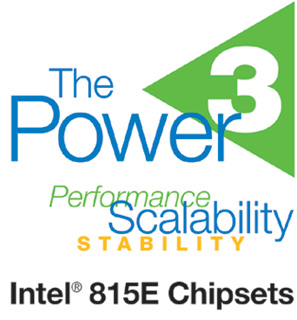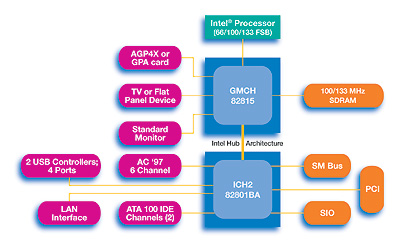
 |

|
| ActiveWin: Reviews | Active Network | New Reviews | Old Reviews | Interviews |Mailing List | Forums |
|
|
|
|
|
DirectX |
|
ActiveMac |
|
Downloads |
|
Forums |
|
Interviews |
|
News |
|
MS Games & Hardware |
|
Reviews |
|
Support Center |
|
Windows 2000 |
|
Windows Me |
|
Windows Server 2003 |
|
Windows Vista |
|
Windows XP |
|
|
|
|
|
|
|
News Centers |
|
Windows/Microsoft |
|
DVD |
|
Apple/Mac |
|
Xbox |
|
News Search |
|
|
|
|
|
|
|
ActiveXBox |
|
Xbox News |
|
Box Shots |
|
Inside The Xbox |
|
Released Titles |
|
Announced Titles |
|
Screenshots/Videos |
|
History Of The Xbox |
|
Links |
|
Forum |
|
FAQ |
|
|
|
|
|
|
|
Windows XP |
|
Introduction |
|
System Requirements |
|
Home Features |
|
Pro Features |
|
Upgrade Checklists |
|
History |
|
FAQ |
|
Links |
|
TopTechTips |
|
|
|
|
|
|
|
FAQ's |
|
Windows Vista |
|
Windows 98/98 SE |
|
Windows 2000 |
|
Windows Me |
|
Windows Server 2002 |
|
Windows "Whistler" XP |
|
Windows CE |
|
Internet Explorer 6 |
|
Internet Explorer 5 |
|
Xbox |
|
Xbox 360 |
|
DirectX |
|
DVD's |
|
|
|
|
|
|
|
TopTechTips |
|
Registry Tips |
|
Windows 95/98 |
|
Windows 2000 |
|
Internet Explorer 5 |
|
Program Tips |
|
Easter Eggs |
|
Hardware |
|
DVD |
|
|
|
|
|
|
|
ActiveDVD |
|
DVD News |
|
DVD Forum |
|
Glossary |
|
Tips |
|
Articles |
|
Reviews |
|
News Archive |
|
Links |
|
Drivers |
|
|
|
|
|
|
|
Latest Reviews |
|
Xbox/Games |
|
Fallout 3 |
|
|
|
Applications |
|
Windows Server 2008 R2 |
|
Windows 7 |
|
|
|
Hardware |
|
iPod Touch 32GB |
|
|
|
|
|
|
|
Latest Interviews |
|
Steve Ballmer |
|
Jim Allchin |
|
|
|
|
|
|
|
Site News/Info |
|
About This Site |
|
Affiliates |
|
Contact Us |
|
Default Home Page |
|
Link To Us |
|
Links |
|
News Archive |
|
Site Search |
|
Awards |
|
|
|
|
|
|
|
Credits |

|
Product: Intel Pentium III 1.13GHz &
D815EEA2 rev. B Review |
Introduction
|
Table Of Contents |
Intel has recently unleashed the fastest Pentium III processor to date, clocked at 1.13GHz. This new baby from the Santa-Clara giant is known under the sweet code name of Tualatin. This new processor is supposed to be the last incarnation of the Pentium III family before it disappears from the Intel's catalogue in favour of the Pentium 4. Engraved in 0.13Ķ the processor doesnít contain any architecture changes except a new design along with a new frequency. Intel sent us this valuable processor along with a stepping B i815EE based Intel motherboard. The Pentium III 1,13GHz targets users that are on the look for affordable power. It will most likely be available through system integrators since Intel will probably not promote the Tualatin beside its OEM partners. So here goes the review!

Intel i815EE rev. B Chipset Overview
 When
the i810 chipset was unleashed Intel included for the first time ever
several cabled features on the chipset itself. Other expensive and
supplementary devices previously achieved these features. The advantage of
including graphic, network and audio circuits on the chipset are obvious:
this technique reduces the total cost of ownership for the final user.
Thus the i810 chipset came with built-in graphics and audio, and so does
the i815. There are several versions of the i815 chipset and some come
with built-in 3D graphics and audio solutions. The Solano 2 chipset we
have tested was an i815EE
rev. B
with build-in graphics
controller as well as support
for AGP 4x. Like every
recent Intel chipset the i815EE
comes with the ICH 2 component also known as 82801BA. This new component
introduced first with the i820E chipset adds support for UDMA 100 high
speed IDE hard drives using appropriate 80pin IDE cables: you can chain up
to four IDE devices but only the two first devices will work in ATA100. In
comparison to ATA66 hard drives, the ATA100 normally brings a very small
10% performance increase so thereís no rush to replace your ATA66 hard
drive especially as it is also supported by the chipset as well as ATA33
or even PIO IDE hard drives. It comes with two USB 1.1 controllers that
feature a 24 MB/s bandwidth across the four ports resulting in a
significant increase over previous USB controllers, which allows the use
of high demanding USB devices like burners, video capture devices, TV
adapters, etc. The main
new feature brought by the revision B of the i815 chipset is the support
of the latest Intel Pentium III processors known as 'Tualatin'. Indeed
only a rev B chipset can support Pentium III 1.13GHz processors.
When
the i810 chipset was unleashed Intel included for the first time ever
several cabled features on the chipset itself. Other expensive and
supplementary devices previously achieved these features. The advantage of
including graphic, network and audio circuits on the chipset are obvious:
this technique reduces the total cost of ownership for the final user.
Thus the i810 chipset came with built-in graphics and audio, and so does
the i815. There are several versions of the i815 chipset and some come
with built-in 3D graphics and audio solutions. The Solano 2 chipset we
have tested was an i815EE
rev. B
with build-in graphics
controller as well as support
for AGP 4x. Like every
recent Intel chipset the i815EE
comes with the ICH 2 component also known as 82801BA. This new component
introduced first with the i820E chipset adds support for UDMA 100 high
speed IDE hard drives using appropriate 80pin IDE cables: you can chain up
to four IDE devices but only the two first devices will work in ATA100. In
comparison to ATA66 hard drives, the ATA100 normally brings a very small
10% performance increase so thereís no rush to replace your ATA66 hard
drive especially as it is also supported by the chipset as well as ATA33
or even PIO IDE hard drives. It comes with two USB 1.1 controllers that
feature a 24 MB/s bandwidth across the four ports resulting in a
significant increase over previous USB controllers, which allows the use
of high demanding USB devices like burners, video capture devices, TV
adapters, etc. The main
new feature brought by the revision B of the i815 chipset is the support
of the latest Intel Pentium III processors known as 'Tualatin'. Indeed
only a rev B chipset can support Pentium III 1.13GHz processors.
The i815EE chipset also offers onboard support for network connections supporting a 10/100MB transfer rate: thatís great to integrate the system in a corporate network for example. The Integrated LAN Capability can be enabled for three distinct networking environments (1 Mbps Home PNA, 10/100Mbps LAN and managed 10/100Mbps LAN). All three solutions utilize Intel SingleDriver technology, with a common set of drivers that simplify network complexity and increase ease of deployment. Associated to the i815EE chipset comes the GMCH controller also known as NorthBridge. The Graphic and Memory Controller Hub controls and manages all the exchanges between the processor, the memory and the AGP port. The AGP 4x port offers a theoretical bandwidth of 1066MB/s: it offers a significant improvement to the basic AGP 2x support of the 440BX/ZX based motherboards by doubling the transfer rate and thereby enabling high performance 3D graphics. This 82815 component supports SDRAM 100 or 133MHz, AGP 4x (with fast writes support) as well as processors with front side bus from 66 to 133MHz. The 133MHz front side bus is 64 bits wide and provides 33% more input, output between the GMCH and CPU than i810 or 440BX chipsets. The i815EE chipset is the first Intel one to support PC133 CAS 2 SDRAM.
If you use a Celeron processor youíll be glad to know that your processor (if itís not an 800MHz model or greater one) will use a 66MHz FSB while the SDRAM will be clocked at 100MHz (against 66MHz with BX chipsets), increasing slightly overall performance. Indeed the i815EE chipset supports among other things asynchronous bus speeds: so you can use a Pentium III with a 133MHz front side bus along with PC100 SDRAM memory at 100MHz. Unfortunately the chipset doesnít support PC133 MHz SDRAM when using Celeron processors: if you have PC133 SDRAM itíll be clocked at 100MHz. Depending on the motherboard version you have, the D815EEA2 may come with a DVI output connector to plug directly to the build-in graphics controller high end LCD monitors. If you decide to not use the onboard graphics chipset, plugging an AGP card on that kind of motherboard will automatically disable the onboard graphic circuit.

i815EE2 ICH2 & MCH
Architecture
